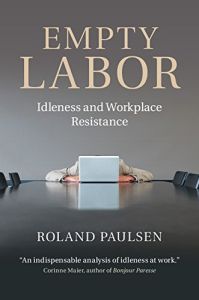
Empty Labor
Idleness and Workplace Resistance
Recommendation
Researcher Roland Paulsen, PhD, offers an in-depth study of “those who never work hard.” He discusses how and why employees waste paid time on non-work activities – “empty labor” that has nothing to do with their jobs. Drawing from a variety of occupations, he interviewed 23 men and 20 women who spend half or more of their time engaged in empty labor. Paulsen defines work in terms of “potential output” and “work obligations.” He defines empty labor by whether potential output is high or low and whether work obligations are strong or weak. He grabs your attention with shocking examples, including a Swedish web designer who worked only one hour a day and whose complicit boss bragged about deleting 600 unread emails. The interesting employee examples balance theoretical chapters that might be most useful to academicians. getAbstract recommends Paulsen’s thorough exploration of slacking off and its effects to academics, researchers and managers in HR, human services and business administration.
Summary
About the Author
Roland Paulsen is the author of Arbetssamhället: Hur Arbetet Overlevde Teknologin (The Society of Labor: How Labor Survived Technology). He is a postdoctoral research fellow in business administration at Lund University in Lund, Sweden.








Comment on this summary